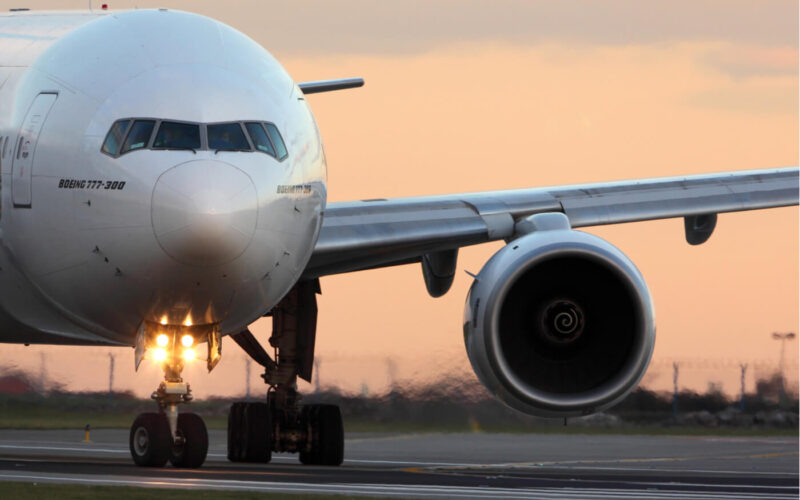Emirates Boeing 777 aircraft, flying from India, crash-landed in Dubai (UAE) as it was attempting to fly a go-around, bursting into flames minutes later. While the 300 people onboard the wide-body evacuated alive, a firefighter was killed when tackling the fire. Immediately after the accident, which happened in 2016, a landing gear failure was suspected to be at fault. However, the final accident report now points to pilot mistake and the fact that the engine thrust was insufficient for a second go-around flight.
Emirates Boeing 777-300 crash-landing at Dubai (the UAE) on August 3, 2016, was the first accident of such scale in the Emirates’ history. Immediately after the incident, reports emerged stating that the aircraft had issues with its landing gear, suggesting that the gear did not fully extend and the aircraft had to land on its belly. However, during the course of investigation, no issues with the Boeing 777-300’s systems or its Rolls-Royce engines were found and the investigators’ shifted their focus to the crew.
Emirates Boeing 777 crash-lands with explosion in Dubai
Emirates Boeing 777-300, registration number A6-EMW, was operating a scheduled passenger flight UAE521 on August 3, 2016. Having departed from Trivandrum International Airport (VOTV), India, the aircraft was about to land at its destination airport in Dubai, the United Arab Emirates.
During the first landing attempt, the Emirates pilots were unable to land the airplane within the runway zone, opting for a go-around instead. While a moderate windshear was expected on the day, the main reason for the go-around decision was due to thermals. Thus, the crew opted for a normal go-around instead of the windshear escape maneuver.
However, some switches required for the second go-around were inhibited because of a touchdown. The problem was, the flight crew were unaware that there had been a touchdown, which lasted for six seconds.
After becoming airborne during the go-around attempt, the aircraft had insufficient engine thrust for the climb and quickly began losing height and speed. While the pilots did try to fix the situation by performing the windshear escape maneuver, it was already too late.
Eighteen seconds after the initiation of the go-around, the Boeing 777 carrying 282 passengers, 16 cabin crew, and two pilots, crashed-landed on the runway 12L in Dubai International Airport (DXB).
After sliding on its lower fuselage along the runway, the plane finally came to a stop next to a taxiway Mike 13. Less than ten minutes later, the aircraft burst into flames as the center wing tank exploded.
Despite the fact that some passengers evacuated with their carry-on baggage, thus prolonging the procedure, the evacuation lasted for about seven minutes (6 minutes 40 seconds). During it, 21 passengers, a pilot, and six crew members sustained minor injuries, while four cabin crew members were injured more seriously. Only the captain and the senior cabin crew member evacuated after the center wing tank explosion.
However, the accident did result in one fatality. The explosion of the wing tank tore down a large section of the right wing upper skin. The falling panel struck and fatally injured a firefighter.
The Emirates Boeing 777 was destroyed during the fire.
Final report lists four main causes
Following a four years’ investigation, the UAE’s General Civil Aviation Authority issued a final report on January 20, 2020. The determined there were four main causes and various contributing factors to the accident:
a) During the attempted go-around, except for the last three seconds prior to impact, both engine thrust levers, and therefore engine thrust, remained at idle. Consequently, the Aircraft’s energy state was insufficient to sustain flight.
(b) The flight crew did not effectively scan and monitor the primary flight instrumentation parameters during the landing and the attempted go-around.
(c) The flight crew were unaware that the autothrottle (A/T) had not responded to move the engine thrust levers to the TO/GA position after the Commander pushed the TO/GA switch at the initiation of the FCOM ̶ Go-around and Missed Approach Procedure.
(d) The flight crew did not take corrective action to increase engine thrust because they omitted the engine thrust verification steps of the FCOM ̶ Go-around and Missed Approach Procedure.

